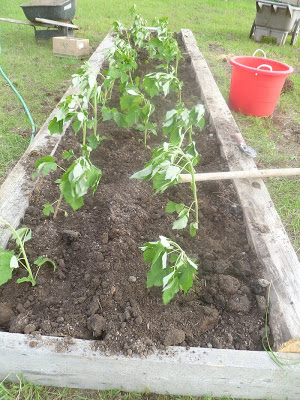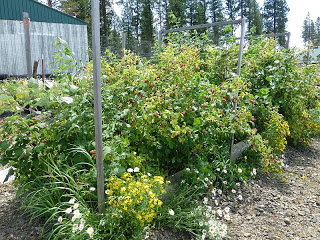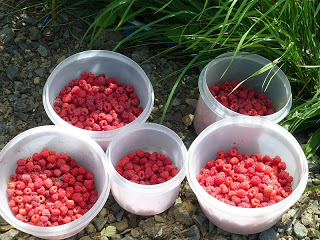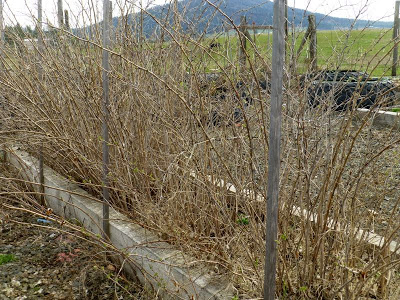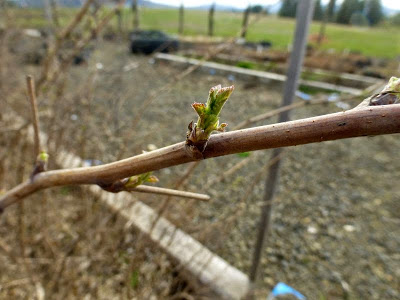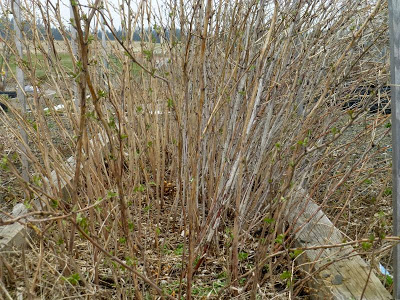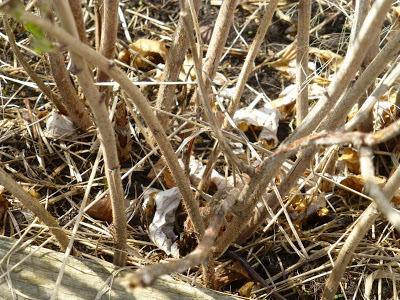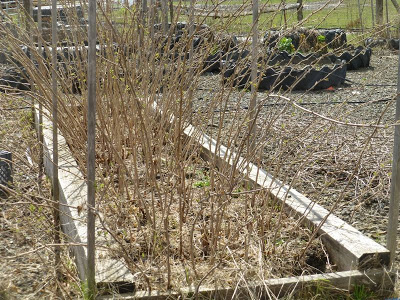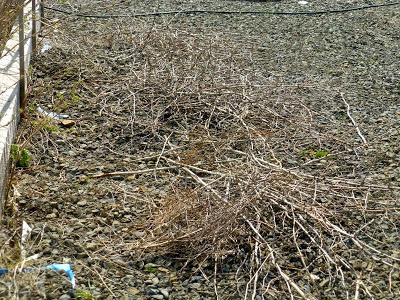| Online: | |
| Visits: | |
| Stories: |

| Story Views | |
| Now: | |
| Last Hour: | |
| Last 24 Hours: | |
| Total: | |
Pruning the raspberries
For years I wanted raspberry bushes. The durn things grow like weeds, so you wouldn’t think it would be too hard to get them established, right?
Wrong. If you’ve been following our gardening mis-adventures, you’d know why I just couldn’t keep raspberries (or anything else) alive. Our tough clay soil was unyielding.
In 2010, Don and I built four raised beds from some massive beams we’d salvaged from an old barn. We filled the beds with good soil and planted two beds of strawberries, one of blueberries, and one of raspberries. The raspberries didn’t make it.
I tried again in 2011, digging up some transplants from a friend’s established bed. These I planted in hopes they would survive.
The brave little transplants survived and thrived. By last summer, we had a bumper crop.
I knew in the back of my mind I should be trimming the raspberry canes, but truthfully I’ve never had successful raspberries before this bed took off, so I wasn’t quite sure how to do it. The books said to trim in the spring. Well, it’s spring, so armed with nippers I headed out to the raspberry bed.
It certainly looked, well, full.
A close examination revealed many of the canes were already sprouting. How could I cut them down? It seemed sacrilegious.
In fact, I lost courage and couldn’t do it. Instead, I discovered an enormous number of canes were dead. Aha! I’ll just trim out the dead stuff and leave the living canes alone.
So that’s what I did, slowly, over the next couple of days: I worked my way down first one side of the bed, then up the other side, trimming out the dead canes.
If you look closely at the photo below, taken end-on, the left side of the bed has the dead canes trimmed out, and the right side of the bed still has the dead canes intact. You can see the difference in density.
In fact, I didn’t realize just how many dead canes there were until they were gone. Now the bed looks much healthier.
It was slow and careful work, having to trace each cane from base to tip to determine which ones were alive. Often the color of the dead canes was a giveaway, but not always, and I accidentally nipped a few living canes out.
Raspberry bed, before:
Raspberry bed, after:
I pulled out piles of the dead stuff. It felt good to get rid of it!
The living canes are beginning to sprout leaves, so this gives them a bit more elbow room. We also have an exciting new development that will boost the raspberries considerably — stand by for news.
Source: http://www.rural-revolution.com/2015/04/pruning-raspberries.html




